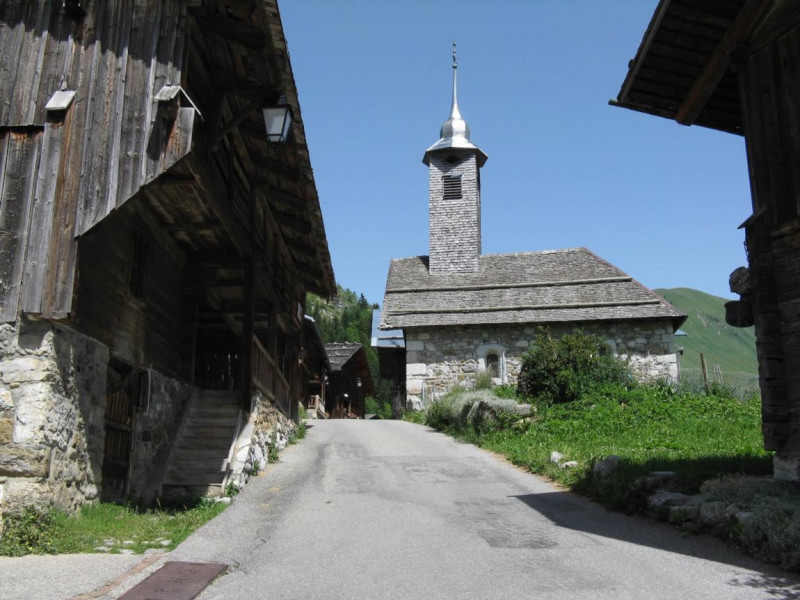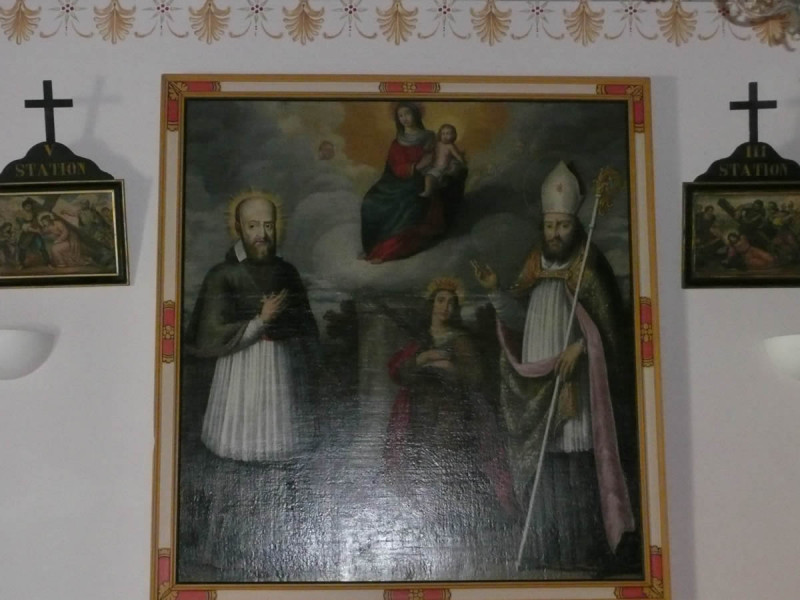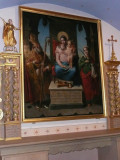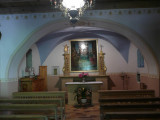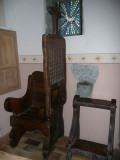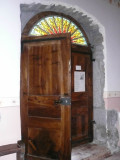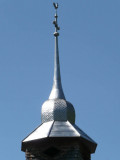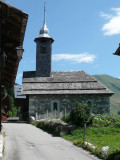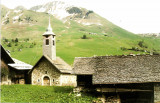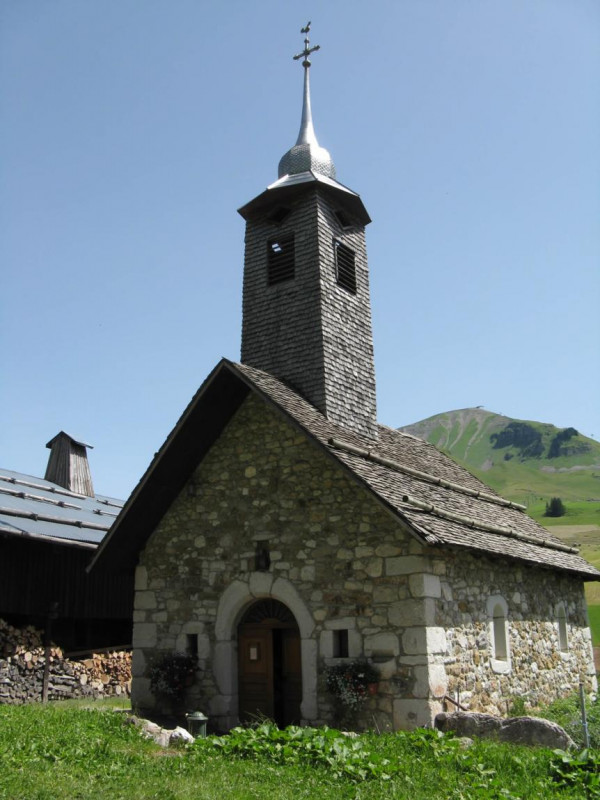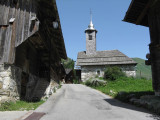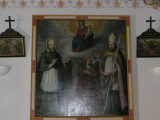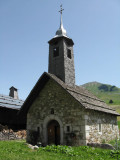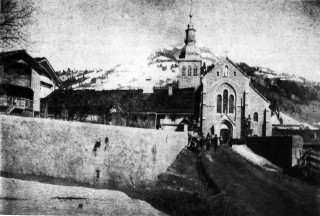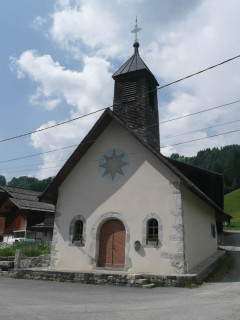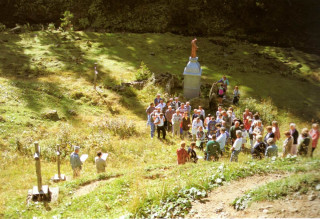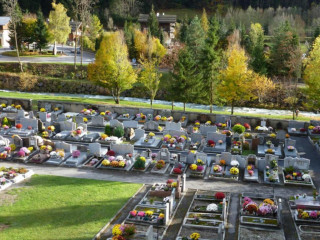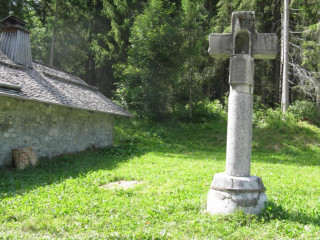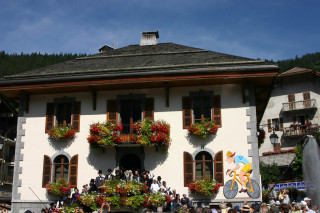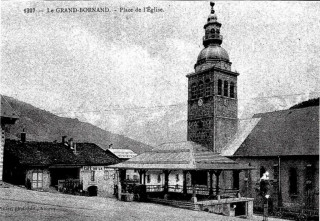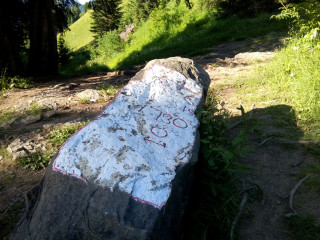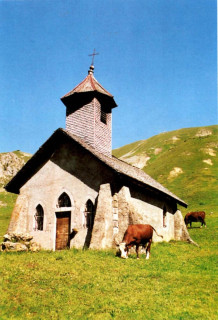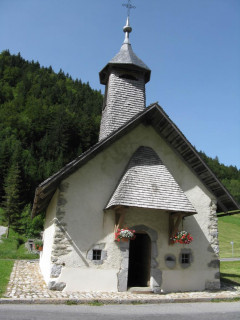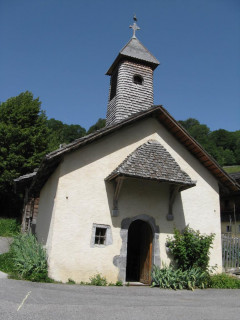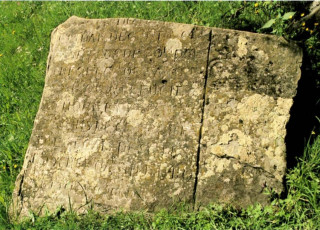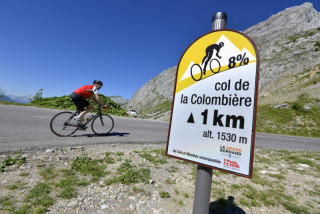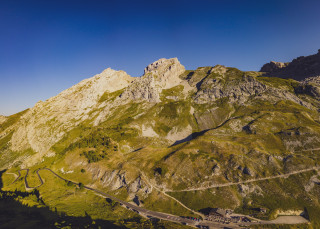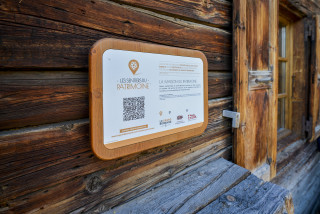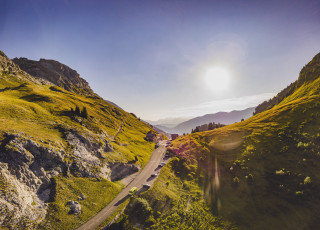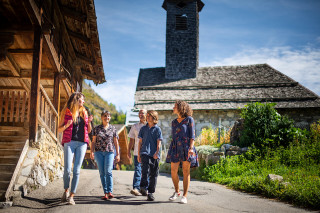Chapel of Le Chinaillon
Contact
Vieux village du Chinaillon
Le Grand-Bornand Chinaillon
74450
Le Grand-Bornand
Phone : +33 4 50 02 79 18
Founded in 1677, the chapel is nestled in the heart of the old village of Le Chinaillon. Despite major renovation work to the building in 1977, it has retained its traditional appearance.
Founded in 1677, the chapel of Le Chinaillon was placed under the patronage of Our Lady of Puy, so as to protect the inhabitants of the village from fire. On the facade, either side of the portal, are two original windows with a small niche above them in which there is a Virgin and Child. Since 1977, the Chapel has been placed under the patronage of Our Lady of the Snow.
The exterior walls of the chapel were originally covered with plaster, but when important restoration work was undertaken in 1977 on the initiative of Barthélémy, a Capuchin brother, the stonework of the walls was uncovered and left apparent. Work on the interior of the chapel, in 2009, enabled a restoration of the softer original colors, which is what the villagers of Le Chinaillon had requested.
Sitting on top of the chapel is a little steeple with a pyramid-shaped base and a dome above it. The dome tapers up to a point with a cross on its summit. In the steeple hangs a bell which was cast in 1901 by the Paccard brothers. Their foundry was in Annecy-Le-Vieux (today it is located in Sevrier). The pedestal with two small columns inside the chapel tells us that the original bell, in 1687, had Jean-Francois Sonnerat-Lanioz as its godfather and that in 1901, Victor Perrissin-Fabert was the godfather and Elisabeth Tochon-Danguy was its godmother. All his life, Alphonse Fournier used to ring the bell, and had done so faithfully ever since his return from the Second World War. Today however, the bell is electrified and it rings every day at noon and 7pm.
On the left-hand side as you enter the chapel there is a painting, dating from 1687, of Saint Francois de Sales, Sainte Barbe (bearing the symbol of her martyrdom, the tower) and Saint- Juste (above a crowned Virgin and Child, most probably Our Lady of Puy, the patron saint of the chapel). This painting was donated by Dominique Tochon, the priest of Le Grand Bornand, and his dedication is written on the bottom of the painting. This painting was registered in the inventory of heritage monuments in April 1983. It has recently been restored.
On the left-hand side as you enter the chapel there is a painting, dating from 1687, of Saint Francois de Sales, Sainte Barbe (bearing the symbol of her martyrdom, the tower) and Saint- Juste (above a crowned Virgin and Child, most probably Our Lady of Puy, the patron saint of the chapel). This painting was donated by Dominique Tochon, the priest of Le Grand Bornand, and his dedication is written on the bottom of the painting. This painting was registered in the inventory of heritage monuments in April 1983. It has recently been restored.
The painting in the centre, reflecting the same theme, is dedicated to the Virgin and Child with Saint François de Sales on her left and Sainte Barbe on her right. Jean Angelloz-Diron, probably an immigrant from Le Grand Bornand, donated this painting in 1822 (cf : the gift donated to the church from the Angelloz-Nicoud family, also during the XIX century)
This painting is framed by two twisted colonnades with cherubs, one with a Virgin on top of it and the other a cross. This setting is typical of the Baroque style (end of XVII/XVIII century). Until 2009, the main altar was a block of granite but it has since been replaced by a simple, contemporary wooden altar.
Note also the statue of a Virgin and Child mounted on a star-studded globe.
The stained glass windows were designed and made in1977 by the artist Mrs Mongeaud from Thonon-les-Bains. The first set of windows shows the daily life of the local population: the bee hive represents the hard working ethic of mountain life while the sheep in the pasture expresses peace and gentleness. There are several features of Christian symbolism : the doves for peace, the grapes and the ears of wheat for the bread and the wine of the Eucharist. The smallest stained glass window is rather more enigmatic, representing Saint Charles sleeping at the feet of his horse.
The exterior walls of the chapel were originally covered with plaster, but when important restoration work was undertaken in 1977 on the initiative of Barthélémy, a Capuchin brother, the stonework of the walls was uncovered and left apparent. Work on the interior of the chapel, in 2009, enabled a restoration of the softer original colors, which is what the villagers of Le Chinaillon had requested.
Sitting on top of the chapel is a little steeple with a pyramid-shaped base and a dome above it. The dome tapers up to a point with a cross on its summit. In the steeple hangs a bell which was cast in 1901 by the Paccard brothers. Their foundry was in Annecy-Le-Vieux (today it is located in Sevrier). The pedestal with two small columns inside the chapel tells us that the original bell, in 1687, had Jean-Francois Sonnerat-Lanioz as its godfather and that in 1901, Victor Perrissin-Fabert was the godfather and Elisabeth Tochon-Danguy was its godmother. All his life, Alphonse Fournier used to ring the bell, and had done so faithfully ever since his return from the Second World War. Today however, the bell is electrified and it rings every day at noon and 7pm.
On the left-hand side as you enter the chapel there is a painting, dating from 1687, of Saint Francois de Sales, Sainte Barbe (bearing the symbol of her martyrdom, the tower) and Saint- Juste (above a crowned Virgin and Child, most probably Our Lady of Puy, the patron saint of the chapel). This painting was donated by Dominique Tochon, the priest of Le Grand Bornand, and his dedication is written on the bottom of the painting. This painting was registered in the inventory of heritage monuments in April 1983. It has recently been restored.
On the left-hand side as you enter the chapel there is a painting, dating from 1687, of Saint Francois de Sales, Sainte Barbe (bearing the symbol of her martyrdom, the tower) and Saint- Juste (above a crowned Virgin and Child, most probably Our Lady of Puy, the patron saint of the chapel). This painting was donated by Dominique Tochon, the priest of Le Grand Bornand, and his dedication is written on the bottom of the painting. This painting was registered in the inventory of heritage monuments in April 1983. It has recently been restored.
The painting in the centre, reflecting the same theme, is dedicated to the Virgin and Child with Saint François de Sales on her left and Sainte Barbe on her right. Jean Angelloz-Diron, probably an immigrant from Le Grand Bornand, donated this painting in 1822 (cf : the gift donated to the church from the Angelloz-Nicoud family, also during the XIX century)
This painting is framed by two twisted colonnades with cherubs, one with a Virgin on top of it and the other a cross. This setting is typical of the Baroque style (end of XVII/XVIII century). Until 2009, the main altar was a block of granite but it has since been replaced by a simple, contemporary wooden altar.
Note also the statue of a Virgin and Child mounted on a star-studded globe.
The stained glass windows were designed and made in1977 by the artist Mrs Mongeaud from Thonon-les-Bains. The first set of windows shows the daily life of the local population: the bee hive represents the hard working ethic of mountain life while the sheep in the pasture expresses peace and gentleness. There are several features of Christian symbolism : the doves for peace, the grapes and the ears of wheat for the bread and the wine of the Eucharist. The smallest stained glass window is rather more enigmatic, representing Saint Charles sleeping at the feet of his horse.
All year round
Description
- Religious heritage :
- Religious heritage
- Chapel
- Period :
- 20th C
- 17th C
Facilities and services
- Parking :
- Parking
- SITRA services :
- Services
- Services
- Services
- Services
- Services
- Services
To note
- Type of SITRA offer :
- Indoor
- Bad weather alternative
- Accessibility criteria for people with reduced mobility :
- Accessible for wheelchairs with assistance
- Doors >=77 cm wide
- Possibility of drop-off in front of the site
- Even flooring with no obstacles
Localisation
FICHE_INFO_SIMPLE_LIBELLE_DESTINATION
Chapelle du Chinaillon
Vieux village du Chinaillon
Le Grand-Bornand Chinaillon
74450
Le Grand-Bornand
GPS coordinates
Latitude : 45.971581
Longitude : 6.4478
Tarifs
Free
View also
After 60 years of building work, undertaken and financed by the local community,it was consecrated in 1877. Built in the neo-gothic style of the XIX century, the architecture is typical of the golden age of the Catholic church.
The chapel of Le Bouchet, in the heart of the Bouchet valley, was founded in 1704 after a flood. It boasts a beautiful altarpiece, dating back to the XVIII century.
The Stations of the Cross pilgrimage at La Duche originated in 1888, linking the chapel of La Duche with St Bruno's oratory, the site of a miraculous spring.
The original cemetery was situated for a long time immediately around the church. In the mid-XX century, it had to be relocated so that a new village square could be built in front of the Tourist Office, the Town Hall and the church.
The cross at Le Clos du Pin is unusual for two reasons : firstly, this stone cross is the oldest of all the Le Grand Bornand crosses (dating from 1500) and secondly, and for the same reason, it has been classified since 1944 as a heritage monument.
The Town Hall is a stone building, typical of early XX century architecture. It houses all the municipal services and the meeting room for the village council.
The weekly market at the Grenette, the old grain market of Le Grand Bornand, characterizes the heart of the old town square. All sorts of concerts and events also take place here, such as concerts given by the local brass band and many local celebrations.
The inscribed border stone, at the foot of the dale of Tardevant, marks the limit between the villages of Le Grand Bornand and La Clusaz. This stone is about 1m. long and is dated 1755.
The chapel of la Duche is the oldest of Grand Bornand. Based in the end of the XVIIth century,it is reconstructed at the end of the XIXth century. Itis dedicated in particular to several agrarian saints: saint Anne, saint Grat and saint Guérin.
Located in the heart of the hamlet of Les Plans, the chapel of the same name was founded in 1702 after the flooding of the Borne river. From the chapel there is a wonderful view over the Aravis mountain chain.
Standing above the village of Le Grand Bornand, with panoramic views over the Aravis chain, the chapel of Le Nant Robert is well worth seeing. It was founded in 1762 and renovated on several occasions during the course of the XX century.
At the end of the Bouchet valley, just above the hamlet of Lormay, there is a stone testifying to events which took place during the French Revolution : priests refusing to swear allegiance to the Constitution were hidden by the local population.
04 50 02 78 00
The Col de la Colombière has featured in the Tour de France 20 times since 1960. It’s southern side, above the resort of the Grand-Bornand, is much less formidable than the climb from Scionzier.
Gradient: 6.5%
04 50 96 69 69
A very athletic circuit that culminates with an ascent of the Col de la Colombière. Cycling the route clockwise minimises the time spent on the busy main road through the Arve Valley and allows you to climb the shady side of the Colombier.
04 50 02 78 00
During your walks, use your mobile phone to discover in an interactive way all the richness of Le Grand-Bornand.
04 50 02 78 00
The southern side of the Col de la Colombière, from the Grand-Bornand, is much less formidable than the climb from Cluses. Nevertheless, the last four kilometres above Chinaillon are very steep.
04 50 02 79 18
From Saturday 05 July to Friday 22 August 2025
Wednesday
at 17:00
Come and discover the historic heart of Chinaillon, with its traditional houses and chapel, and take a trip back to a time, not so long ago, when life...

